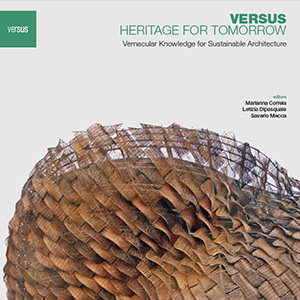
Impact
The impact of the project on a long-term basis
There is the strong conviction that the impact of the project will extend through a significant period of time. Understanding the theme potential, several Universities are using the publications that emerged from this project as pedagogic tools in the education of future architects and engineers. The methodology of the VerSus project is also being referenced in several articles and presentations, as an encouraging and relevant approach to follow.
Several Master students are exploring the VerSus method as an operative approach for future research, which is producing relevant outcomes from their study. Research has been developed in Brazil, Denmark, Ecuador, France, India, Italy, Morocco, Nepal, Paraguay, Portugal and Spain. Professionals, such as architects and engineers, are also beginning to apply VerSus principles as a reference in their professional work.
The global aim of the project was to achieve knowledge from the study of sustainability, as well as acknowledgement regarding its components and principles, which are identified in the vernacular built heritage, and to contribute to their recognition and cultural diffusion. These were the main aims that were established and fully accomplished, as well as disseminated during the project.
The VerSus project is complementary to the enhancing actions of cultural heritage, as it strengthens the common awareness that vernacular architecture throughout the world is alive and can still play an active role in contemporary society. This is possible not only as a resource for tourism, but also as a benchmark to generate a more sustainable development based on local resources and knowledge. Nowadays, the debate on the lessons that can be learned from the vernacular heritage to create sustainable architecture should involve not only scholars and designers, but also a wider public, composed by the builders and the community itself.
To achieve sustainable architecture and construction processes, both for the conservation and rehabilitation of vernacular buildings, as well as for the construction of contemporary architecture, there is a need to improve and enhance a common awareness on the existent connection between heritage and sustainability, which covers environmental issues, but also socio-cultural and socio-economic questions.
As citizens, professionals, teachers and parents of the next generation, it is relevant to mention our common responsibility towards a critical reflection, and a responsible engagement for each of us, to be more active towards the sustainable development of our society.
Mariana Correia, Escola Superior Gallaecia, Vila Nova de Cerveira, Portugal.
Educational institutions where the VerSus methodology was presented, applied and / or used its publications as bibliographical references:
- Escola Superior Gallaecia, Portugal.
- Escola Técnica Superior de Arquitectura - Universidade da Coruña, Spain.
- Escuela Técnica Superior de Arquitectura - Universitat Politènica de València, Spain.
- Facultad de Arquitectura y Urbanismo - Universidad de Cuenca, Equador.
- École Nationale Supérieure d'Architecture de Grenoble, France.
- Facoltà di Ingegneria e Architettura - Università degli Studi di Cagliari, Italy.
- Scuola di Architettura - Università degli Studi di Firenze, Italy.
- School of Architecture, Civil and Environmental Engineering - Ecole polytechnique fédérale de Lausanne, Switzerland
- École Nationale Supérieure d'architecture de Lyon – Université de Lyon, France.
- Escuela Técnica Superior de Arquitectura de Madrid - Universidad Politécnica de Madrid, Spain.



